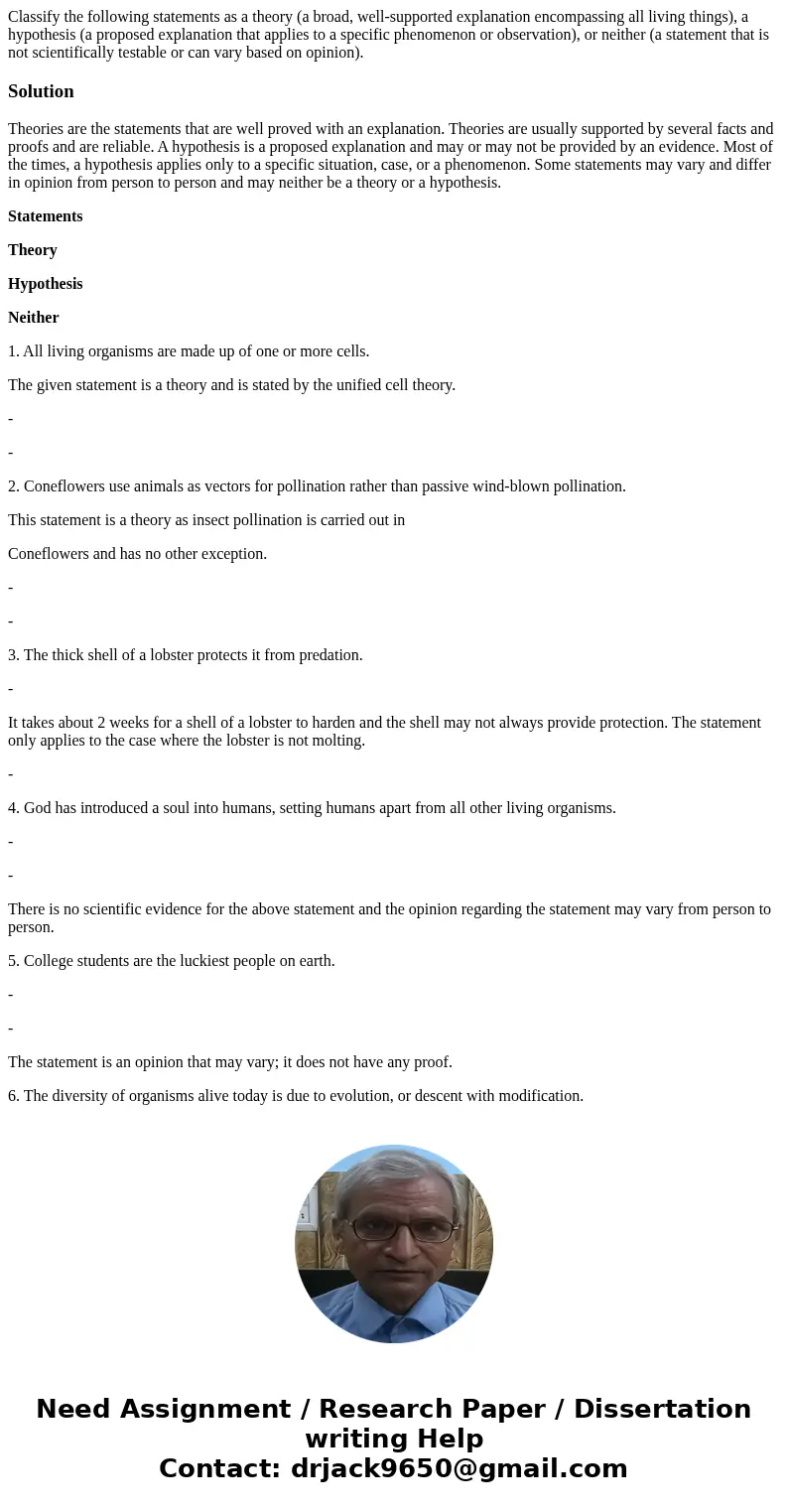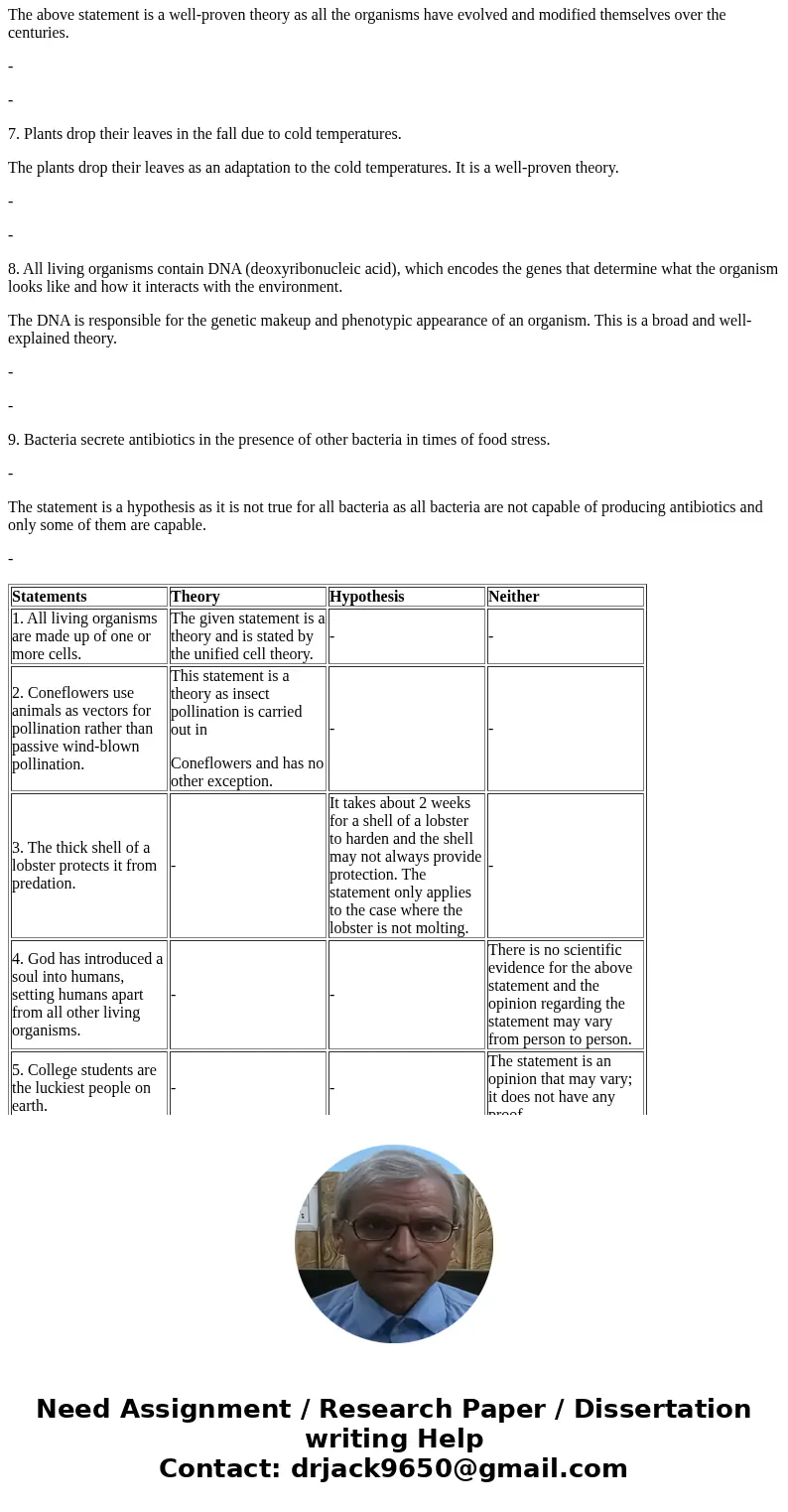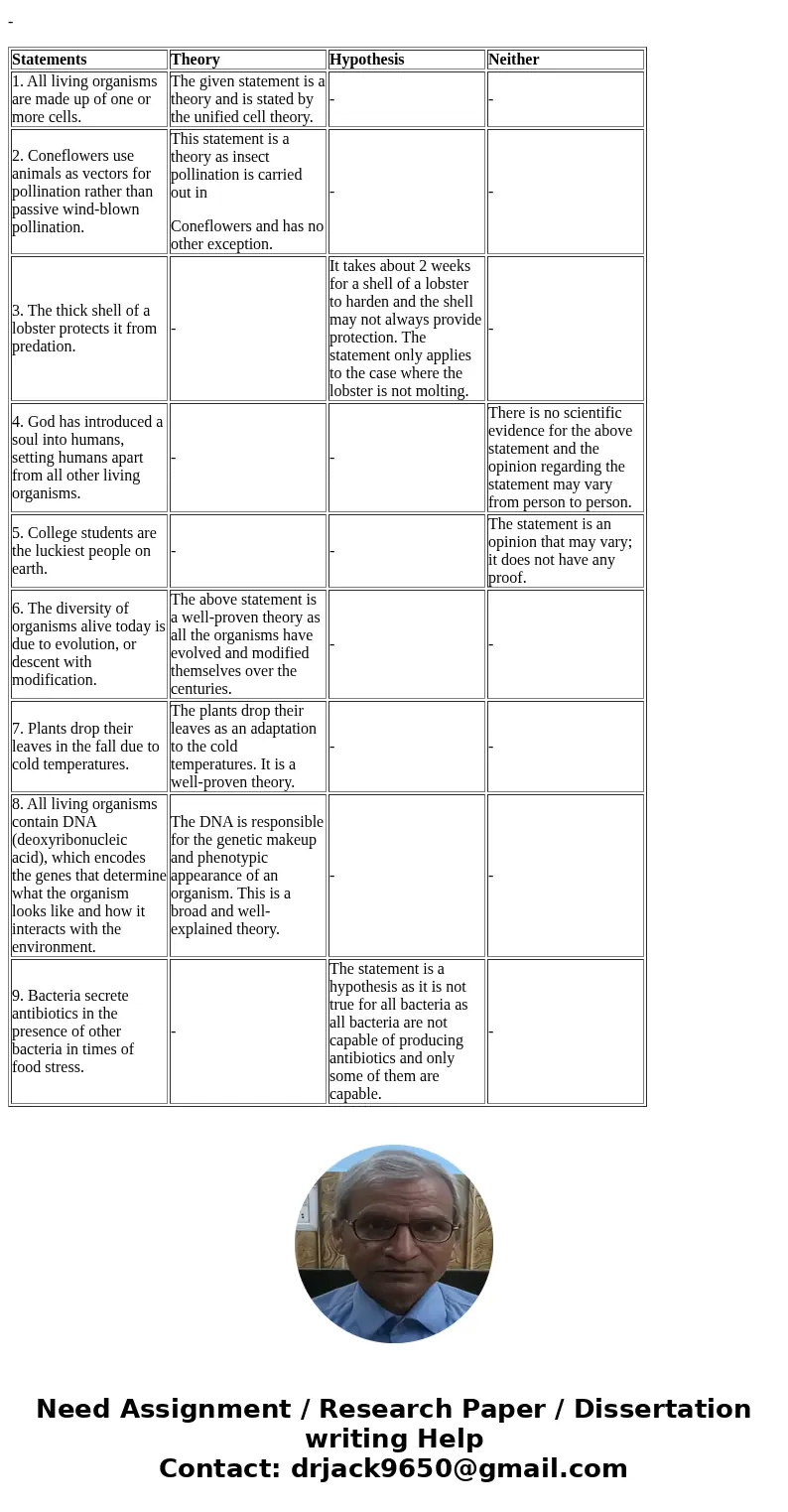Classify the following statements as a theory a broad wellsu
Solution
Theories are the statements that are well proved with an explanation. Theories are usually supported by several facts and proofs and are reliable. A hypothesis is a proposed explanation and may or may not be provided by an evidence. Most of the times, a hypothesis applies only to a specific situation, case, or a phenomenon. Some statements may vary and differ in opinion from person to person and may neither be a theory or a hypothesis.
Statements
Theory
Hypothesis
Neither
1. All living organisms are made up of one or more cells.
The given statement is a theory and is stated by the unified cell theory.
-
-
2. Coneflowers use animals as vectors for pollination rather than passive wind-blown pollination.
This statement is a theory as insect pollination is carried out in
Coneflowers and has no other exception.
-
-
3. The thick shell of a lobster protects it from predation.
-
It takes about 2 weeks for a shell of a lobster to harden and the shell may not always provide protection. The statement only applies to the case where the lobster is not molting.
-
4. God has introduced a soul into humans, setting humans apart from all other living organisms.
-
-
There is no scientific evidence for the above statement and the opinion regarding the statement may vary from person to person.
5. College students are the luckiest people on earth.
-
-
The statement is an opinion that may vary; it does not have any proof.
6. The diversity of organisms alive today is due to evolution, or descent with modification.
The above statement is a well-proven theory as all the organisms have evolved and modified themselves over the centuries.
-
-
7. Plants drop their leaves in the fall due to cold temperatures.
The plants drop their leaves as an adaptation to the cold temperatures. It is a well-proven theory.
-
-
8. All living organisms contain DNA (deoxyribonucleic acid), which encodes the genes that determine what the organism looks like and how it interacts with the environment.
The DNA is responsible for the genetic makeup and phenotypic appearance of an organism. This is a broad and well-explained theory.
-
-
9. Bacteria secrete antibiotics in the presence of other bacteria in times of food stress.
-
The statement is a hypothesis as it is not true for all bacteria as all bacteria are not capable of producing antibiotics and only some of them are capable.
-
| Statements | Theory | Hypothesis | Neither |
| 1. All living organisms are made up of one or more cells. | The given statement is a theory and is stated by the unified cell theory. | - | - |
| 2. Coneflowers use animals as vectors for pollination rather than passive wind-blown pollination. | This statement is a theory as insect pollination is carried out in Coneflowers and has no other exception. | - | - |
| 3. The thick shell of a lobster protects it from predation. | - | It takes about 2 weeks for a shell of a lobster to harden and the shell may not always provide protection. The statement only applies to the case where the lobster is not molting. | - |
| 4. God has introduced a soul into humans, setting humans apart from all other living organisms. | - | - | There is no scientific evidence for the above statement and the opinion regarding the statement may vary from person to person. |
| 5. College students are the luckiest people on earth. | - | - | The statement is an opinion that may vary; it does not have any proof. |
| 6. The diversity of organisms alive today is due to evolution, or descent with modification. | The above statement is a well-proven theory as all the organisms have evolved and modified themselves over the centuries. | - | - |
| 7. Plants drop their leaves in the fall due to cold temperatures. | The plants drop their leaves as an adaptation to the cold temperatures. It is a well-proven theory. | - | - |
| 8. All living organisms contain DNA (deoxyribonucleic acid), which encodes the genes that determine what the organism looks like and how it interacts with the environment. | The DNA is responsible for the genetic makeup and phenotypic appearance of an organism. This is a broad and well-explained theory. | - | - |
| 9. Bacteria secrete antibiotics in the presence of other bacteria in times of food stress. | - | The statement is a hypothesis as it is not true for all bacteria as all bacteria are not capable of producing antibiotics and only some of them are capable. | - |



 Homework Sourse
Homework Sourse